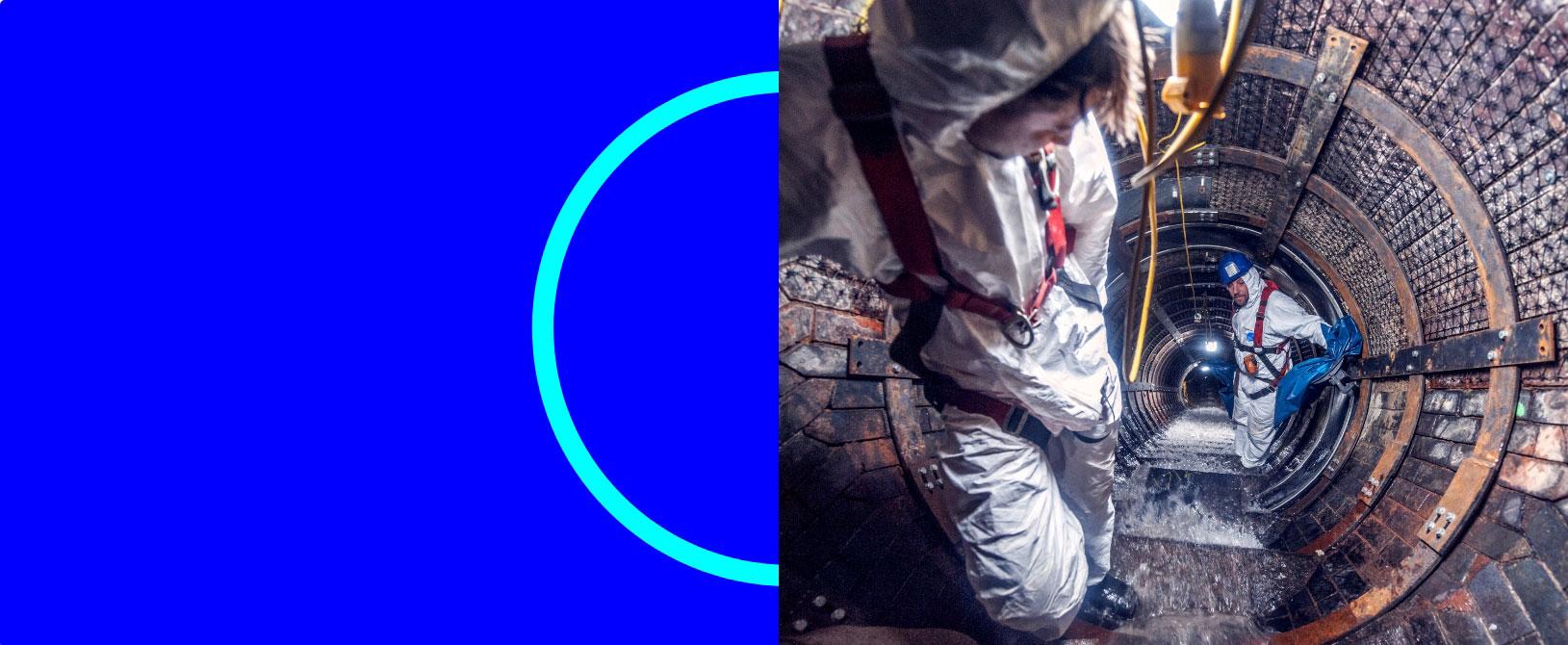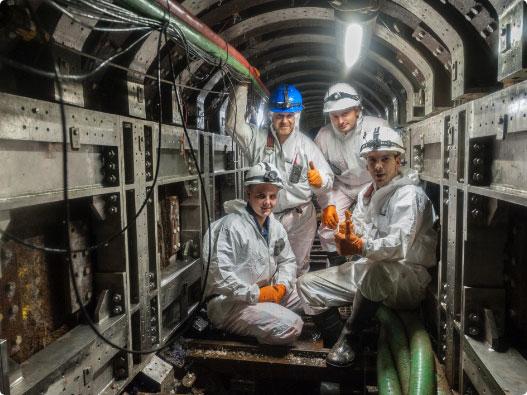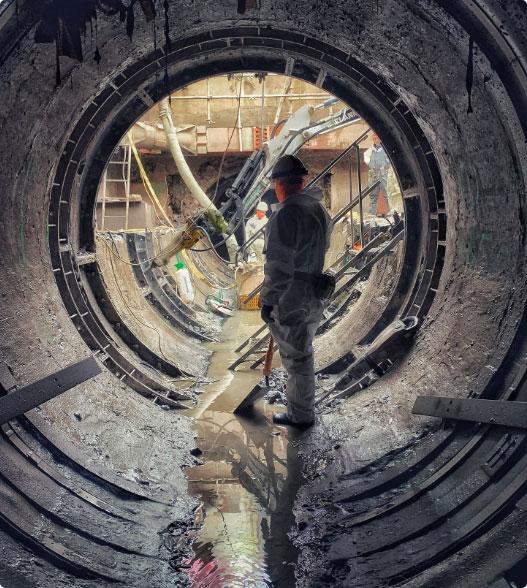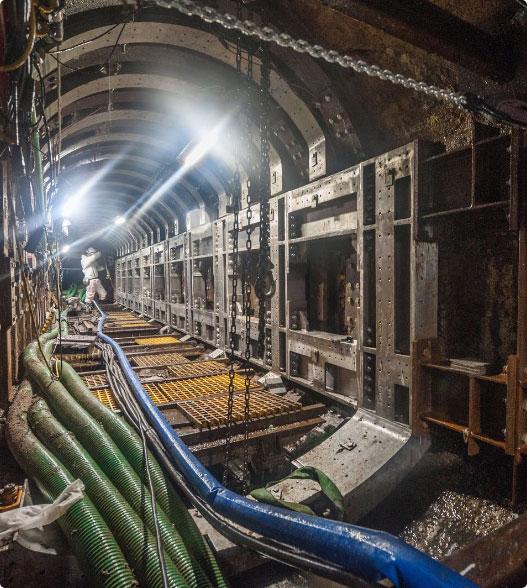What is a hybrid lining system?
Modern drainage and sewerage networks are complex systems. Sometimes, maintenance and rehabilitation using a single method is not possible. Hybrid lining systems provide a solution. They use a combination of methods and materials – such as steel cages, rubber tube sections, and CIPP lining – to solve specific challenges. In all cases, we strive to avoid excavation.
The benefits
Hybrid lining systems offer a solution when conventional lining techniques will not work. They are typically very thin, which means a minimal reduction of the host pipe’s diameter – usually around 6% of the cross-section area.
They allow us to rehabilitate old and fragile pipelines, where other methods such as piling or tunnelling may cause structural damage. Our steel and rubber sewer lining systems are usually temporary, with a design life of about five years. We can remove these components in sections, allowing us to inspect the host pipe safely, identify damage early, and reduce the risk of further harm. This piecemeal approach allows us to conduct repairs before removing the remaining sections.
Meanwhile, steel and CIPP lining combinations have a design life in excess of 70 years. They are used to restrain or route a CIPP liner through major diameter changes and large voids, or to facilitate a significant diameter reduction in deep sewers with restricted access. We can install lateral connections using specially-designed top hat systems.
Talk to the pipe rehabilitation and repair experts at McAllister about a bespoke solution to your drainage and sewerage challenges.
McAllister’s hybrid lining systems service
We use hybrid lining systems only when conventional techniques will not work, and a no-dig solution is the only viable option. Hybrid systems differ, depending on the challenge, but typically involve a combination of:
-
factory-engineered steel cages, delivered in sections, that can be erected in situ – either rigid or jacked against the host pipe wall.
-
overlapping rubber tubes secured against the host pipe.
-
CIPP liners, constrained within a cage system, usually made of steel.
To ensure a safe and successful installation, our teams require:
- safe entry and exit routes.
- 6-8 hours site access per working shift – multiple shifts may be required.
- access for over-pumping and tankering equipment to control high flows.
- a pipeline with a 750 mm – 3000 mm diameter.
Our technicians conduct a survey of the site and use this information to prefabricate the new hybrid lining system at a safe distance. The component parts are then carried by hand through existing access chambers.
They install the solution in batches, installing a new section with each working shift. At each point, they can set up flow monitoring and early warning systems, and outline a safe system of work and rescue.
Choose McAllister
Our staff – from the technicians on the ground to our senior leaders – have direct experience installing hybrid lining systems. These solutions require close consultation and collaboration with designers and manufacturers. We boast a long track record of successful innovation and new product development – essential skills for designing effective hybrid lining systems. We understand the relevant materials and processes intimately.
Systems thinking and engineering is second nature to our engineers and technicians. We won’t move ahead with a solution unless we are convinced that it will work.
Get our expertise and experience on your side. Get in touch with McAllister today.
Choose
McAllister
Get in touch to learn more about how we can go above and beyond, below.






